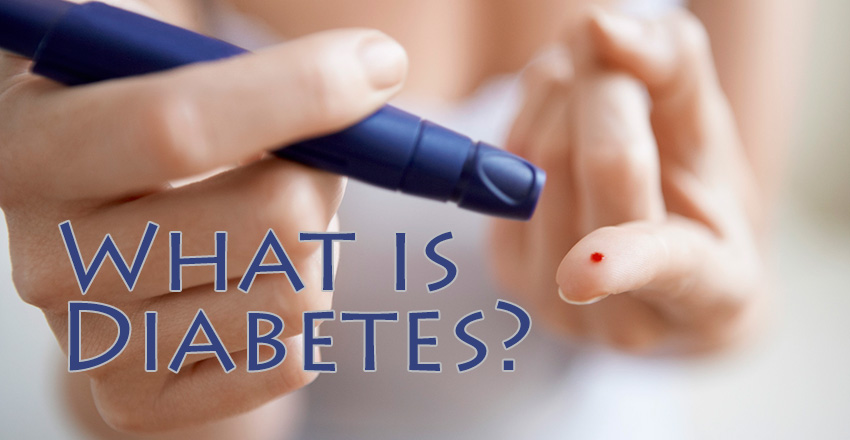Diabetes mellitus is defined as a fasting blood glucose of 126 milligrams per deciliter (mg/dL) or more. “Pre-diabetes” is a condition in which blood glucose levels are higher than normal but not yet diabetic. Diabetes can cause many complications. Acute complications (hypoglycemia, ketoacidosis or nonketotic hyperosmolar coma) may occur if the disease is not adequately controlled. Serious long-term complications include cardiovascular disease (doubled risk), chronic renal failure (diabetic nephropathy is the main cause of dialysis in developed world adults), retinal damage (which can lead to blindness and is the most significant cause of adult blindness in the non-elderly in the developed world), nerve damage (of several kinds), and microvascular damage, which may cause erectile dysfunction (impotence) and poor healing. Poor healing of wounds, particularly of the feet, can lead to gangrene which can require amputation — the leading cause of non-traumatic amputation in adults in the developed world.
Diabetes is the third leading cause of death in the United States after heart disease and cancer. Over time, diabetes can lead to blindness, kidney failure, and nerve damage. These types of damage are the result of damage to small vessels, referred to as microvascular disease. Diabetes is also an important factor in accelerating the hardening and narrowing of the arteries (atherosclerosis), leading to strokes, coronary heart disease, and other large blood vessel diseases. This is referred to as macrovascular disease. Diabetes affects approximately 17 million people (about 8% of the population) in the United States. In addition, an estimated additional 12 million people in the United States have diabetes and don’t even know it. Normally, blood glucose levels are tightly controlled by insulin, a hormone produced by the pancreas. Insulin lowers the blood glucose level.
Non-insulin-dependent diabetes mellitus (NIDDM)–is due to a combination of defective insulin secretion and insulin resistance or reduced insulin sensitivity (defective responsiveness of tissues to insulin), which almost certainly involves the insulin receptor in cell membranes. In the early stage the predominant abnormality is reduced insulin sensitivity, characterized by elevated levels of insulin in the blood. Gestational diabetes also involves a combination of inadequate insulin secretion It develops during pregnancy and may improve or disappear after delivery. Even though it may be transient, gestational diabetes may damage the health of the fetus or mother, and about 20%-50% of women with gestational diabetes develop type 2 diabetes later in life.Gestational diabetes mellitus (GDM) occurs in about 2%-5% of all pregnancies.


